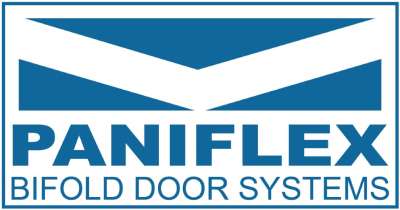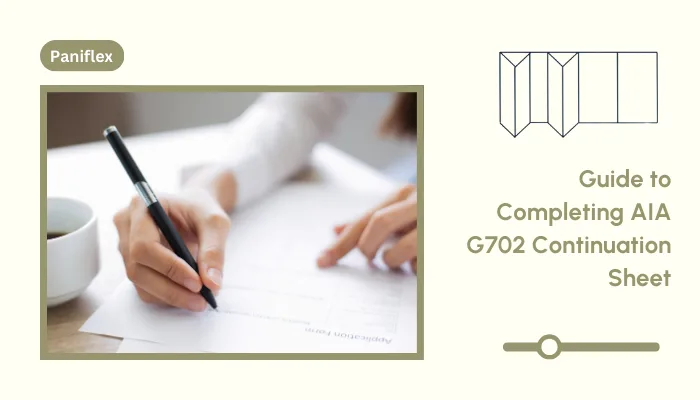Continuing education is an essential component of an architect’s career. It ensures that you stay updated on industry trends, new technologies, and evolving regulations.
The American Institute of Architects (AIA) has established a Continuing Education Program to support architects in maintaining their skills, certifications, and overall professional growth. AIA’s continuing education requirements ensure that architects remain at the forefront of their field.
In this blog, we will explore AIA’s continuing education requirements, how architects can earn and track their credits, and the importance of ongoing learning in shaping a successful architectural career.
Ready to experience the benefits of custom closet doors? Explore our range of Paniflex products now.
What Are AIA Continuing Education Requirements?
AIA Continuing Education requirements are designed to help architects stay informed about the latest architectural developments. These requirements ensure that architects continue to build their expertise and meet the industry’s evolving demands.
Mandatory Learning Hours
To maintain AIA membership and stay compliant with licensing bodies, architects must complete a specified number of Continuing Education Units (CEUs) within a set period.
For AIA members, this typically involves completing 18 learning hours (or 1.8 CEUs) annually. These hours are focused on professional development and are intended to cover various aspects of architecture, including design, sustainability, building codes, and technology.
AIA’s CEU Guidelines
AIA has set specific guidelines for the types of learning hours that count toward their CEU requirements. These guidelines help architects focus on critical practice areas while allowing room for further specialization.
- HSW/LU (Health, Safety, Welfare / Learning Units): A significant portion of the required CEUs must cover topics that contribute to the health, safety, and welfare of the public. This includes courses on building codes, energy efficiency, and safety regulations.
- Elective Hours: Architects can also take elective courses on business management, project management, or software training to fulfill their CEU requirements.
- State-Specific Requirements: Some states have additional continuing education requirements beyond AIA’s guidelines, such as courses on state-specific regulations or ethics. Architects should ensure they comply with AIA and their state’s requirements.
These continuing education requirements help architects stay knowledgeable about changes in building codes, technologies, and design practices. CEUs also ensure that the work remains relevant, safe, and effective in meeting the needs of clients and society.
Suggested Read: The Ultimate Architect Checklist For Client Design Briefs
Types of Continuing Education Offered by AIA
AIA provides a variety of continuing education opportunities to help architects meet their professional development requirements. These opportunities cater to different learning preferences and schedules.
They ensure that architects can access relevant and engaging content, whether they prefer in-person interactions or online learning. Here are the primary types of continuing education offered by AIA:
Live Learning Opportunities
Live learning opportunities, such as conferences, seminars, and workshops, allow architects to engage in face-to-face learning experiences. These events often feature expert speakers, panel discussions, and interactive sessions that cover various topics relevant to architectural practice.
Live events provide the added benefit of networking with other professionals in the field, offering collaboration and knowledge-sharing opportunities.
Online Learning Opportunities
AIA offers a robust selection of online courses, webinars, and virtual seminars that allow architects to earn CEUs at their own pace and convenience. These online learning opportunities cover various topics, from design trends to regulatory updates.
Architects can choose from pre-recorded webinars, on-demand courses, and virtual conferences to fit their busy schedules without sacrificing educational goals.
Self-Directed Learning
Self-directed learning provides flexibility for architects who prefer to learn at their own pace. This type of learning may involve reading articles, books, or conducting independent research on topics relevant to architectural practice.
Architects can submit proof of their self-directed learning activities to earn CEUs, making this an ideal option for those with limited time or specific areas of interest they wish to explore further.
These different learning formats ensure that architects have ample opportunities to meet their continuing education requirements. This is done while accommodating various learning styles and professional schedules.
Suggested Read: DIY Ideas for Replacing HVAC and AC Closet Doors
How AIA Tracks Continuing Education Credits
AIA provides a streamlined system for architects to track and manage their Continuing Education Units (CEUs) to ensure they meet the requirements.
The AIA’s online tracking system simplifies the process of logging and submitting credits, making it easier for architects to stay on top of their professional development.
1. AIA’s Online Tracking System
AIA members have access to an online platform where they can track their CEU progress throughout the year. This system allows architects to record and monitor their completed courses, keeping a running total of their earned CEUs.
The platform automatically updates and provides a clear overview of how many hours have been completed, as well as how many more are needed to meet the requirements.
2. Submitting CEU Credits
Architects are required to submit their completed CEUs to AIA for verification. Through the online tracking system, they can easily upload certificates of completion from AIA-approved courses and events.
Architects may need to submit additional documentation for non-AIA courses to ensure the credit is counted toward their requirements.
3. Monitoring Progress and Deadlines
The AIA tracking system helps architects monitor their progress and deadlines, ensuring that they stay compliant with both AIA’s requirements and any state-specific mandates. The platform sends reminders and notifications about upcoming deadlines, helping architects plan their education ahead of time to avoid last-minute rushes.
Architects can stay organized and ensure they meet their continuing education requirements without stress with this user-friendly system. This makes it easier for them to maintain their credentials while focusing on their practice.
Suggested Read: Standard Linen Closet Door Sizes: Essential Guide
Why Continuing Education Matters for Architects?
Continuing education plays a crucial role in an architect’s career development, ensuring that professionals remain knowledgeable, skilled, and adaptable in an ever-evolving industry.
AIA’s Continuing Education Program is designed to help architects stay informed about new trends, regulations, and technologies, benefiting their practice and their clients. Here are some key reasons why continuing education is vital for architects:
Industry Trends
- Architecture is constantly evolving with new materials, design trends, and technologies.
- Continuing education ensures architects are knowledgeable about the latest innovations, keeping their designs current and competitive.
Professional Competence
- Ongoing education helps architects refine their skills and broaden their knowledge in specific areas like sustainability, project management, or digital tools.
- This leads to improved performance, better project outcomes, and higher client satisfaction.
Compliance
- Architecture is subject to frequent updates in building codes, safety standards, and environmental regulations.
- Continuing education ensures architects stay informed and compliant with these legal requirements, reducing the risk of errors and legal issues.
Architects can ensure they remain at the forefront of their profession, delivering high-quality, compliant, and innovative solutions for their clients by completing their continuing education requirements.
How to Earn AIA Continuing Education Credits
Continuing education is a vital aspect of an architect’s professional journey. As the architecture field constantly evolves with new technologies, regulations, and design practices, staying informed is crucial.
Architects have multiple avenues to earn AIA Continuing Education Units (CEUs), ensuring flexibility while meeting their professional development goals.
Here are the main ways to earn CEUs:
1. AIA-Approved Courses
- What It Is: AIA-certified courses specifically designed to meet continuing education requirements.
- How It Works: Architects can take courses on a variety of topics, from design innovations to building codes.
- Why It’s Helpful: These courses are directly aligned with AIA’s CEU program and are available both online and in-person.
2. Conferences and Seminars
- What It Is: Live events, such as conferences, workshops, and seminars, hosted by AIA or other industry bodies.
- How It Works: Architects can attend these events to earn CEUs while gaining valuable networking opportunities.
- Why It’s Helpful: These sessions often include interactive elements like panel discussions, case studies, and workshops that deepen knowledge and provide practical insights.
3. Webinars and Online Learning
- What It Is: Webinars and online seminars that cover specialized topics in architecture.
- How It Works: Architects can attend live or on-demand webinars from their home or office.
- Why It’s Helpful: Flexible and convenient, these online sessions fit into busy schedules, allowing architects to learn at their own pace.
4. Self-Directed Learning
- What It Is: Architects can earn CEUs by engaging in self-directed learning activities like reading books, articles, or research papers.
- How It Works: Architects submit proof of their learning activities to AIA for credit.
- Why It’s Helpful: This option provides maximum flexibility and can be tailored to an architect’s specific interests or project needs.
By participating in these different educational opportunities, architects can stay on top of industry changes, improve their skills, and meet AIA’s continuing education requirements.
Earning CEUs through structured courses is one of the most effective ways for architects to meet their continuing education requirements. AIA-approved courses are designed to provide in-depth learning on key architectural topics, allowing professionals to stay current with trends, regulations, and best practices.
AIA-Certified Course for Earning CEUs
AIA-certified courses offer a structured and flexible way to earn these credits while gaining in-depth knowledge on specific aspects of architecture. One valuable course available to architects is “The Ceiling is the Limit: Customizable Closet Doors”, sponsored by Custom Door & Mirror.
This course provides CEUs and practical insights into integrating customizable closet doors into architectural designs, enhancing both function and aesthetics in modern spaces.
By completing this course, architects will:
- Gain a comprehensive understanding of the design principles behind customizable closet doors.
- Learn how to select the right materials and configurations based on specific project requirements.
- Understand the installation process and key considerations for incorporating closet doors into architectural designs.
- Explore the sustainable and space-saving benefits of using customizable closet doors in various types of spaces.
This course allows architects to earn Continuing Education Units (CEUs). It also provides practical knowledge that can be applied immediately to design projects. The insights gained can be used to enhance the functionality and aesthetic appeal of interior spaces while optimizing space and meeting client needs.
Additionally, as a free and accessible online course, it provides flexibility for architects to complete it at their convenience, making it an ideal option for busy professionals.
Ready to experience the benefits of custom closet doors? Explore our range of Paniflex products now.
Conclusion
AIA Continuing Education is essential for architects to stay at the forefront of their profession. Through a variety of educational opportunities, architects can earn the CEUs necessary to maintain their credentials and improve their skills.
Courses like “The Ceiling is the Limit: Customizable Closet Doors” fulfill CEU requirements and provide practical, actionable knowledge that architects can directly apply to their projects. With a range of options available, earning CEUs has never been more flexible and accessible.
Ready to enhance your skills and earn CEUs at your own pace? Sign up for the course today!






